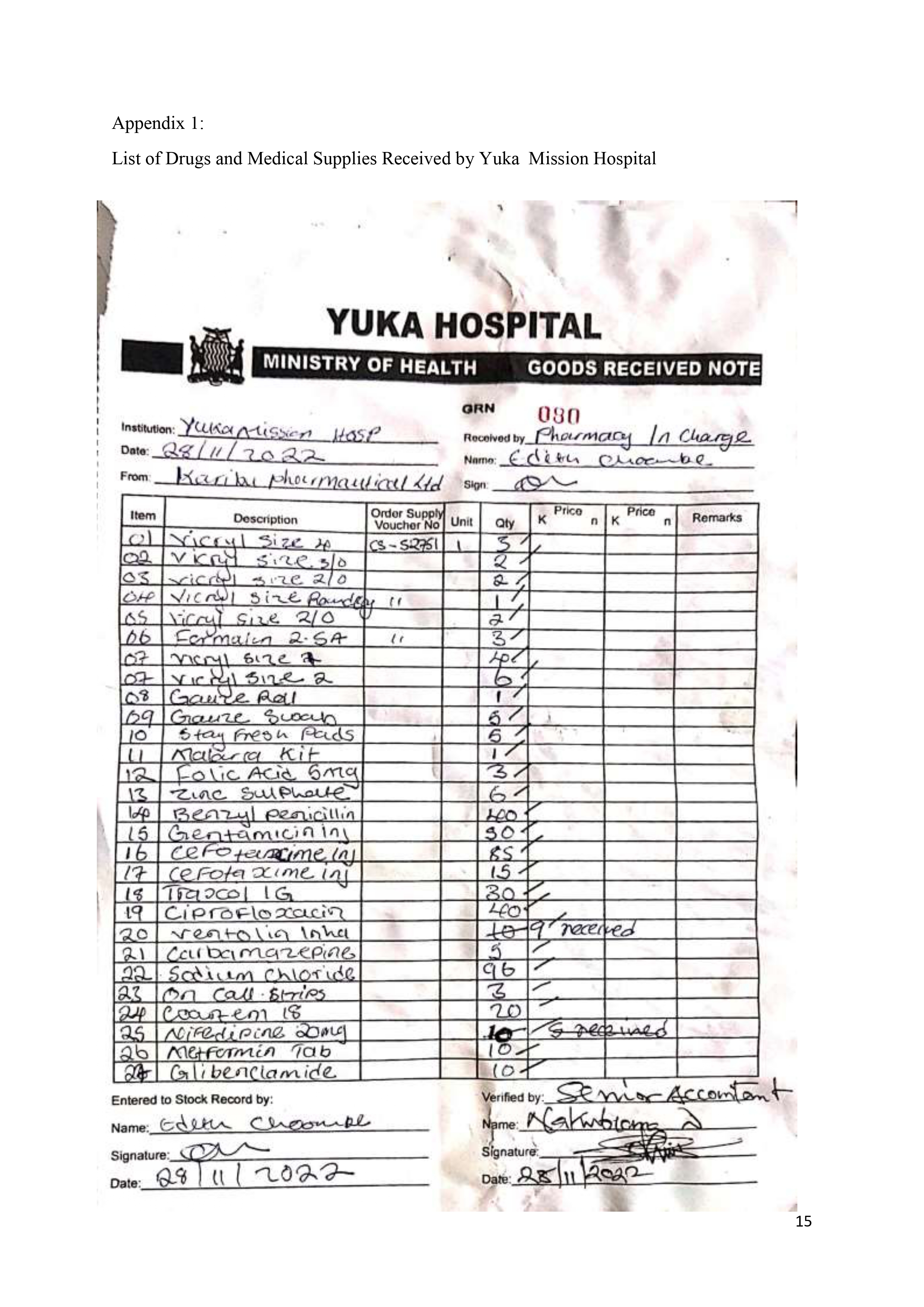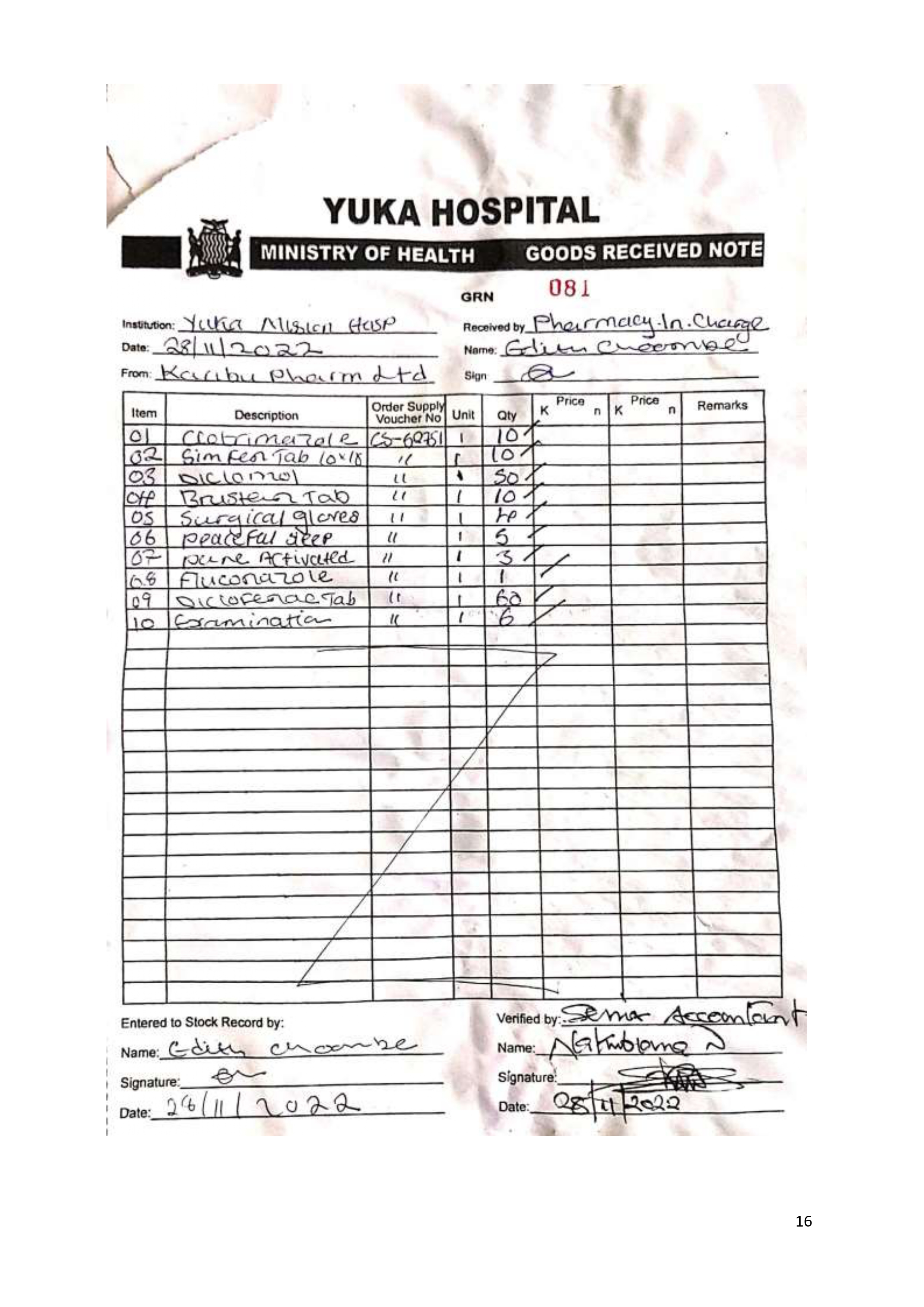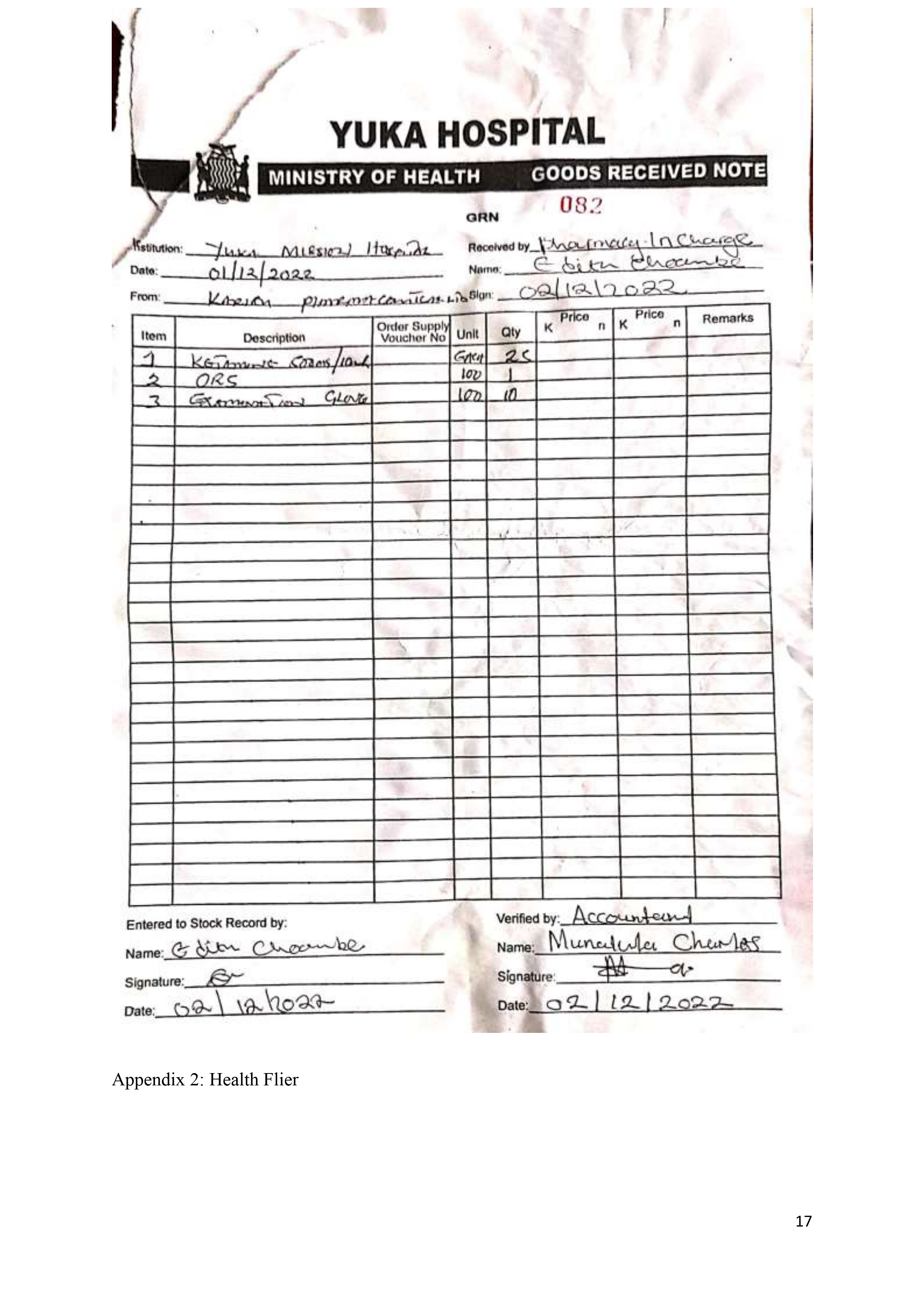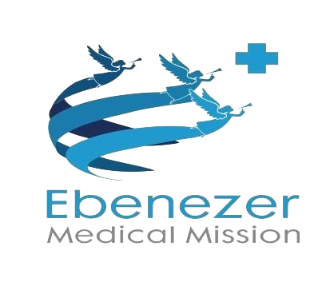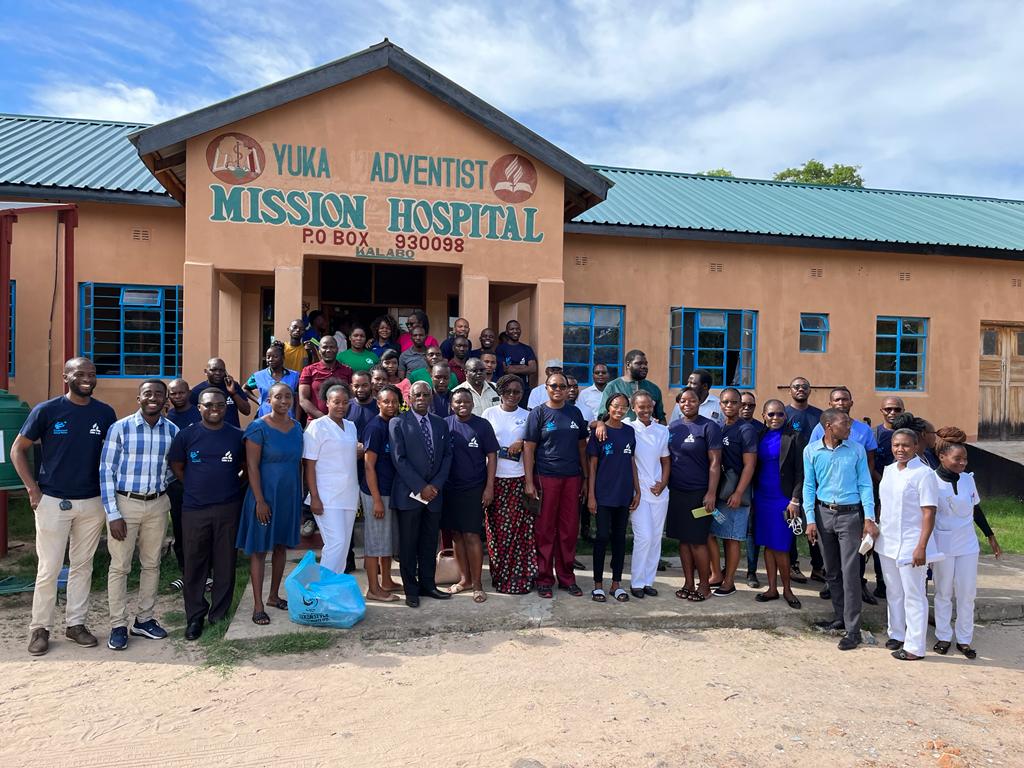
Theme “I Will Go, Serve With Compassion”
Acknowledgements
This specialist outreach would not have been possible without financial support from the
Southern Zambia Union Conference and the Southern Africa Indian Ocean Division of the
Seventh Day Adventist Church.
We would like to express my heartfelt gratitude to Dr Muntanga Kampengele Mapani for her
mentorship role and immense technical, financial and logistical support throughout the
project.
We are also deeply grateful to Dr Alexis Llaguno for his untiring support towards medical
missionary work.
A special thankyou to Mr and Mrs Schimuzhila for technical and logistical support, as well as
for going beyond the call of duty to ensure the well-being of the entire team throughout the
outreach period.
We would also like to thank the hospital staff at Yuka Mission Hospital and Kalabo District
for the support and teamwork, and sacrifice to work overtime in order to facilitate patient
care.
Special thanks go to the team of Specialists, Healthcare workers, Evangelists and Medical
Missionaries who worked tirelessly and compassionately to minister to the physical and
spiritual needs of the community members during the outreach. Additionally, we are grateful
to the staff and management of Lusaka Adventist Dental Services for the technical support and
logistical support.
Ultimately, we give glory and honour to God Almighty for the gifts of life, good health,
strength and His great providence in ensuring that success of this mission.
Outreach Summary
| Collaborators/Sponsors | Ebenezer Medical Mission || Southern Zambia Union Conference || Southern African Indian Ocean Division | |
| Theme | I will go, Serve with Compassion | |
| Dates | 27th November to 4th December, 2022 | |
| Site | Yuka Mission Hospital | |
| Budget | K97,791.93 | |
| Transport | K25,235.05 | |
| Insurance | K120.00 | |
| Medical Supplies | K29.964.00 | |
| Publicity | K10,360.00 | |
| Food and Groceries | K27,812.88 | |
| Administrative Costs | K5,300.00 | |
| Activities/Deliverables | Number of patients seen | 404 |
| Surgeries Conducted | 83 | |
| Nutritional demonstration Health Effort | >150 women 6 sermons preached 5 morning devotions |
|
| Literature Distribution | The Final Hope, Over 150 copies were distributed | |
| Chitenge/wrappers distributed | 30 |
1. Site Information
The Focus of the outreach was Yuka Seventh Day Adventist Mission Hospital. The Hospital is a first level facility established in 1953. Located in the Western Province of Zambia, Kalabo District, the hospital serves the population of Kalabo and Sikongo Districts, with some referrals coming from across the border in Angola.
2. Team Members
Twenty-five people travelled to Yuka for the mission. The team members together with their specialities and roles that each played are outlined in Table 1 below:
Table 1 Team Members Who Travelled to Yuka Mission and Their Roles
| Group | Role/Speciality | Number (n=25) |
|---|---|---|
| Evangelism Team | Chaplain (Pastor) | 1 |
| Evangelists | 3 | |
| Medical Team | Clinical Officer | 1 |
| Medical Doctors (General Practitioner) | 2 | |
| Medical Laboratory Technician | 1 | |
| Medical Student | 1 | |
| Nurses | 2 | |
| Paediatric Cardiologist | 1 | |
| Paediatric Nurse | 1 | |
| Paediatric Pulmonologist | 1 | |
| Pharmacists | 1 | |
| Surgical Team | Anaesthesiologist | 1 |
| Dental Surgeon | 1 | |
| Dental Therapist | 1 | |
| General Surgeon | 1 | |
| Gynaecologist | 2 | |
| Paediatric Surgeon | 1 | |
| Theatre Nurse | 1 | |
| Transport Team | Driver and Assistant | 2 |
3. Activities
3.1. Day 1: Travel to Yuka 27/11/2022
.jpeg)
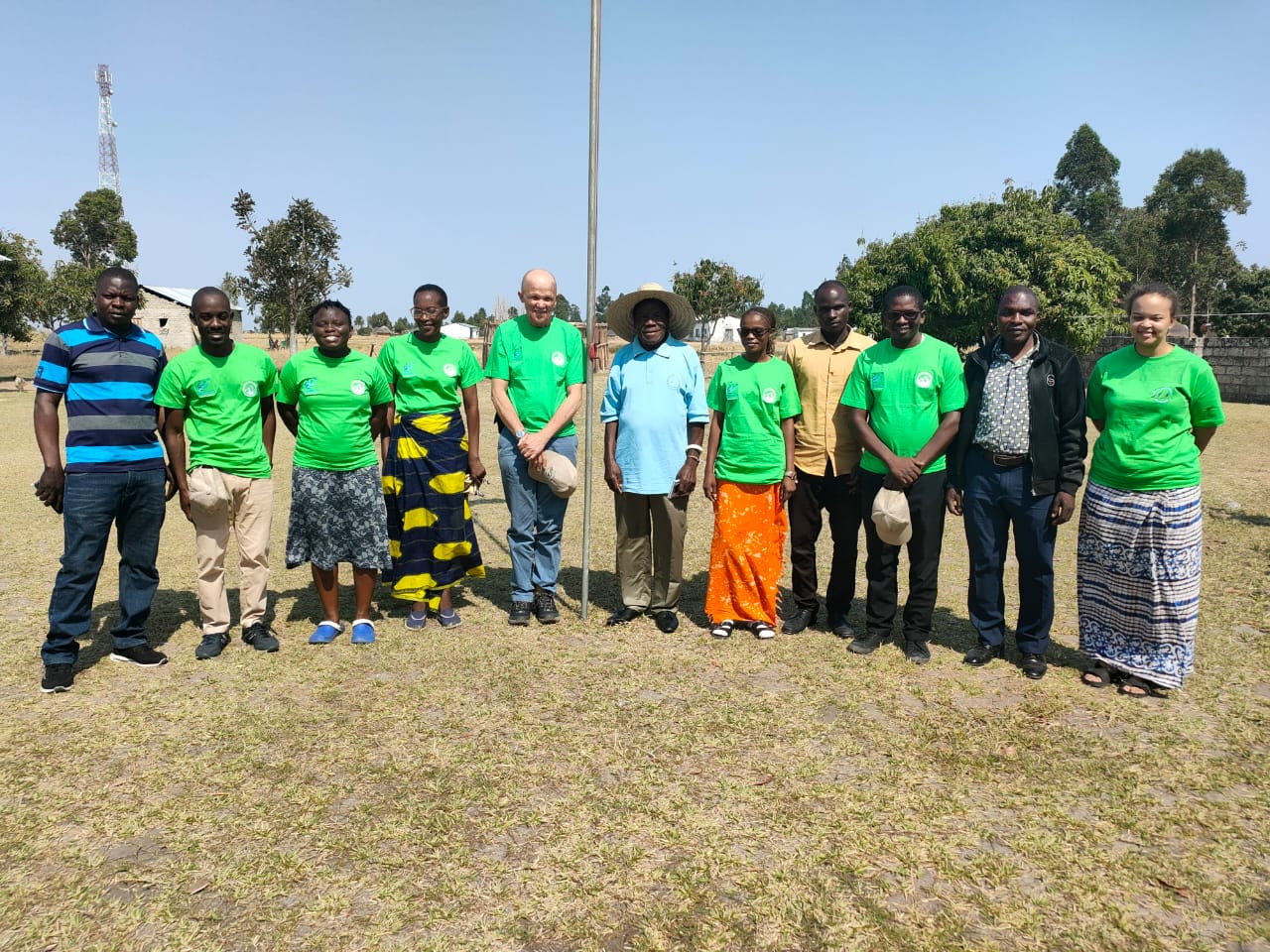
The team travelled over 650km to reach Yuka Mission Hospital
3.2 Activities 28/11/2022 – 02/12/202
The first day began with a morning devotion, and thereafter introductions and a tour of the
facility. The tour was brief as there was a multitude of people lined up waiting for medical
attention.
Daily activities included morning devotion, clinical + evangelistic activities and an effort in
the evening. A total of 404 clients were recorded during the outreach. Of these, 117 (29%) were
children and 287 (71%) were adults. 72% of the children were under the age of 5 with an equal
distribution of males and females. Among the adults, 81% were female, yielding a male: female
ratio of 1:4. The patient ages ranged from 1month to 92years. Religion was indicated in 46%
of the patients. Of these, 48% were non Seventh Day Adventists.
Table 2 Patient Demographics
| Age Bracket | Male | Female | Sex Not Indicated | SDA | Non-SDA | Religion Not Indicated |
|---|---|---|---|---|---|---|
| Under 5 | 42 | 42 | 0 | 39 | 30 | 48 |
| Children 5 -17yrs | 26 | 7 | 3 | |||
| Adults | 55 | 221 | 11 | 57 | 57 | 173 |
| Total | 123 (30%) | 270 (67%) | 11 (3%) | 96 (24%) | 87 (22%) | 221 (54%) |
Table 3 Children’s Illnesses
| Condition | Number |
|---|---|
| Cardiovascular | |
| Heart Disease | 3 |
| Varicose veins | 1 |
| Haemotological | |
| Sickle cell anemia | 1 |
| Anaemia | 1 |
| Central Nervous System/Mental Disorders | |
| Cerebral Palsy | 1 |
| Downs Syndrome | 1 |
| Hearing impairment | 1 |
| Autism with speech impediment | 1 |
| Dental | |
| Irreversible pulpitis | 1 |
| Reversible pulpitis | 1 |
| ENT | |
| Tonsillitis | 1 |
| Gastrointestinal | |
| Jaundice | 1 |
| Vitamin deficiency | 1 |
| Immunological | |
| Allergies | 3 |
| Respiratory | |
| Asthmatic | 2 |
| Upper Respiratory Tract Infection | |
| Tumours | |
| Nasal Mass | 1 |
| Tumour | 2 |
| Total | 23 |
The statistics indicated in the table 3 includes dental conditions but excludes conditions captured under surgical conditions. The children seen in the Under 5 clinic (69) are not captured as illnesses and therefore not included in the table.
Table 4 Adult Illnesses
| Condition | Number |
|---|---|
| Cardiovascular | |
| Congestive Cardiac Failure | 3 |
| Deep Vein Thrombosis | 2 |
| Heart Disease (1 mitral stenosis, 1 suspected heart disease) | 2 |
| Hypertension | 13 |
| Upper Gastrointestinal bleeding | 1 |
| Central Nervious System/Mental Disorders | |
| Bipolar Mental Disorder | 1 |
| Depression | 1 |
| Epilepsy | 3 |
| Migraine | 1 |
| Suspected Space occupying mass | 1 |
| ENT/Eye | |
| Deafness and Dumbness | 1 |
| Cataracts | 1 |
| Suspected Glaucoma | 1 |
| Gastrointestinal | |
| Hepatosplenomegaly | 1 |
| Splenomegaly | 3 |
| Constipation | 1 |
| Dyspepsia | 5 |
| Chronic Liver Disease | 1 |
| Gastritis | 6 |
| Abdominal pains | 1 |
| Worm Infection | 1 |
| Genitourinary System | |
| Polycystic Kidneys | 1 |
| Gynacological | |
| Amenorrhea | 1 |
| Bartholin's cyst | 1 |
| Cervicitis | 1 |
| Chronic Pelvic pain | 8 |
| Cervical incompetence | 2 |
| Ectopic pregnancy | 1 |
| Fertility challenges | 19 |
| Fibroi | 7 |
| Fibroids in pregnancy | 1 |
| Galactorrhea | 1 |
| Menopausal Symptoms | 3 |
| Mentrual Disorder | 6 |
| Ovarium Cysts | 3 |
| Pelvic Mass | 5 |
| Pelvic Prolapse (2 Cystocoele, 2 Procidentia) | 4 |
| PID | 2 |
| Vaginal Candidiasis | 5 |
| Vasico Vaginal Fistula | 1 |
| Immunological | |
| Suspected Systemic Lupus Erythematosus | |
| Metabolic/Nutritional Diseases | |
| Diabetes Mellitus | 1 |
| Diabetes Mellitus + Hypertension | 1 |
| Vitamin B6 deficiency | 2 |
| Drug Induced Nutritional deficiency | 1 |
| Musculoskeletal/Integumentary | |
| Body pains in geriatric | 7 |
| Arthritis | 3 |
| Dermatological disorder | |
| Respiratory | |
| Asthmatic | 3 |
| Bronchitis | 1 |
| Chest pains | 1 |
| Suspected Malignancy | |
| Cervical cancer | 1 |
| Prostate cancer | 1 |
| Trauma | |
| Soft Tissue Injury due to trauma | 2 |
| Diagnosis not indicated | 8 |
| Normal examination findings | 3 |
| Infections | |
| Cystitis | 1 |
| Oophoritis | 1 |
| Pneumonia | 1 |
| Soft tissue Infection | 1 |
| Sexually Transmitted Infection | 1 |
| Tuberculosis | 9 |
| Upper Respiratory Tract Infection | 1 |
| Urinary Tract Infection (2 Pregnancy) | 8 |
| Total | 181 |
The top five adult conditions are outlined in Table 5 below:
Table 5: Top 5 Adult Conditions
| 1. Fertility Challenges | 19 | 10.5% |
| 2. Hypertension | 13 | 7.2% |
| 3. Urinary Tract Infections | 9 | 5.0% |
| 4. Tuberculosis | 9 | 5.0% |
| 5. Chronic Pelvic Pain | 8 | 4.4% |
3.3 Procedures
The procedures done included Cardiac Echoes and Surgeries. The cardiologist conducted all the Echoes. The surgeries were divided into Dental, Gynaecological, General and Paediatric Surgeries.
Echocardiograms
Fourteen (14) Echo’s were conducted.
Table 6 Echo Diagnoses
| S/N | Condition | Number (%) |
|---|---|---|
| 1. | Dilated Cardiomyopathy with Hypertension | 1 (7) |
| 2. | hypertensive Heart Diease with Arrhythmias | 1 (7) |
| 3. | Hypertensive Heart Disease with Diastolic Dysfunction | 6 (43) |
| 4. | Normal Heart | 3 (22) |
| 5. | Pulmonary Hypertension | 1 (7) |
| 6. | Ventricular Hypertrophy with diastolic dysfunction | 1 (7) |
| 7. | Ventricular Septal Defect | 1 (7) |
| Total | 14 |
Table 7 Distribution of Surgical Cases
| Department/Discipline | Number | Percentage (%) |
|---|---|---|
| Dental | 47 | 57 |
| General Surgery | 17 | 20 |
| Paediatric Surgery | 11 | 13 |
| Obstetrics and Gynaecology | 8 | 10 |
| Total | 83 | 100 |
Table 8 Surgical Procedures Conducted
| Dental Surgery | General Surgery | Paediatric Surgery | Obstetrics and Gynaecology |
|---|---|---|---|
| Extractions 20 | Excisions 5 | Cis-trunk operation 1 | Anterior colporrhaphy 1 |
| Resin Filling 12 | Foreign Body Removal 1 | Herniotomy 9 | Hysterectomy 1 |
| Scaling and Polishing 14 | Granglion Aspiration 1 | Orchidopexy 1 | Vaginal Hysterectomy 1 |
| Root Canal Treatment 1 | Herniorrhaphy 7 | Myomectomy 2 | |
| Haemorrhoid evacuation 1 | Laparotomy for ectopic pregnancy 1 | ||
| Suprapubic catheterisation 1 | Tuboplasty 1 | ||
| Change of suprapubic catheter 1 | Marsupialisation of Bartholin's cyst | ||
| Total 47 | 17 | 11 | 8 |
3.4 Disease Burden
The community surrounding Yuka Mission Hospital have a double burden of both communicable and non-communicable diseases. The commonest communicable diseases were Tuberculosis and Urinary tract Infections. Hypertension topped the list for non-communicable diseases. The need to upscale treatment of the condition is evidenced by complications, particularly Hypertensive Heart Disease which characterised nearly 60% of all the Echo findings. A major challenge expressed by patients and caregivers is the critical shortage in antihypertensive as well as other essential medicines at the facility. This contributes to poor compliance to medications. When available, due to limited stocks, patients are given medication for two weeks and at most, 1 month. Concerning communicable diseases, Tuberculosis (TB) was common. Half of the TB patients had Pulmonary TB, whilst the remainder had Extra-pulmonary TB, with one case of spinal TB. TB medications are readily available and all confirmed cases were on treatment.
For the gynaecological cases, fertility related challenges were very common, accounting for 10% of all non-surgical conditions. These included both primary and secondary sub-fertility. Most of the affected women either were in polygamous marriages (husbands would marry other women to bear children) or separated/divorced. These findings reflect the strong cultural influences in which female virtue is measured by the number of children. Fibroids and candidiasis were also common gynaecological complications. Additionally, multiple women had to be educated on the menopausal transition and associated symptoms. This allayed fears facing the women approaching or recently menopausal.
Dental extractions were the commonest surgical procedure, accounting for nearly ¼ (24%) of the procedures The high burden of dental cases reflects the increased need for dental hygiene sensitisation, as well as nutritional education to promote healthy teeth, and use nutrition as a means of fighting diseases. The dental team managed to raise over K13, 000 for the hospital through the National Health Insurance Scheme (NHIMA). This was significant in that it demonstrated a plausible avenue for raising income for the health facility during visits by specialists. Hernia repairs were the second comments surgical procedure at (19%). More than half of these were in children. More procedures could have been performed, however, logistical challenges, particularly lack of an anaesthetic machine at Yuka Mission, led to most procedures being performed at Kalabo General. Time was therefore lost in transferring patients daily from Yuka to Kalabo General Hospital. Additionally, lack of some anaesthetic consumables and equipment tailored for paediatric patients limited the number of major surgeries performed on the children.
3.5 Nutrition Demonstrations and Evangelism
Women presenting at the Under 5 clinic as well as interested by standers were taught on how to make nutritional foods using local ingredients. Particularly, how to enrich various porridges, as seen in Figure 6. They were also taught on vegetable combinations and making best use of locally available fruits. This is to curb the high levels of moderate malnutrition noted among children in the Under 5 age bracket within the community. Over 150 people received lessons in nutrition. In addition, the women received fliers (See Appendix 1) and a free missionary book “The Final Hope”. Over 150 copies of “The Final Hope” were distributed during the effort, on Sabbath and to various persons during the journey back to Lusaka. Thirty elderly women were give Chitenges (Wrappers) during the effort.
3.6 Sabbath Activities
On the Sabbath day, the team participated in activities at Yuka SDA Church, including Sabbath School and preaching of the sermon. All were encouraged to trust God for their health challenges, as God knows, understands and will do something about the situation in the fullness of time. Object lessons were derived from the story of the man by the pool of Bethsaida for 38years. The afternoon was a time to relax and rest from all the weeks labour. The team went to the harbour for a refreshing look at nature.
4. Challenges
- Inadequate time: It was noted that a two-week period would be ideal to enable screening of patients in the first week and surgeries in the second week.
- Lack of anaesthetic machines, anaesthetic equipment, and cardiac monitors and anaesthetic drugs such as Pancuronium (muscle relaxant). The above posed challenges in conducting procedures under general anaesthesia.
- Limited supply in drugs, including common antibiotics such as amoxicillin, cloxacillin and analgesics. Despite buying several antibiotics, analgesics and antihypertensive, these were inadequate to meet all of the facility needs.
- Electricity outages affected operations in theatre. There was also inadequate lighting in the theatre at Kalabo General Hospital
- Literature for distribution was all in English, disadvantaging some members of the community.
- Lack of a public Address System limited sermon delivery.
5. Recommendations
1. Yuka Mission Hospital to procure anaesthetic equipment and cardiac monitors in order to facilitate future outreach activities
2. Maximise the usage of NHIMA schemes and documentation to widen income base of the facility during Mission outreaches
3. The facility to increase funding directed at procurement of drugs and other essential medical consumables
4. To increase the number of specialist visits to the facility in order to reduce referral burden and economic burden on community members. 5. Production of literate in local languages
